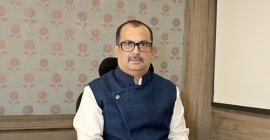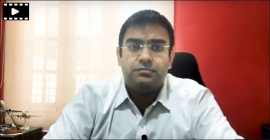‘Programmatic DOOH standards & technology are progressing’
By Rajiv Raghunath - June 10, 2018
Adam Green, Sr Vice President and General Manager, Broadsign Reach, talks about the future course of programmatic digital OOH
 A programmatic digital OOH platform makes it so much easier for media buyers and sellers, and yet programmatic media buying has not taken off in a big way. Do you see it all changing in the coming times?
A programmatic digital OOH platform makes it so much easier for media buyers and sellers, and yet programmatic media buying has not taken off in a big way. Do you see it all changing in the coming times?
The benefits of programmatic DOOH are appealing to both media buyers and sellers, but as with any new transaction method, the transition won’t happen overnight, rather it will be slow and steady. Tap to pay credit cards, for instance, improved the user experience, but the system took quite a few years to become widely accepted.
Programmatic DOOH standards and technology are progressing, though work remains to be done. That said, players on both the buy and sell side are already beginning to familiarise themselves with the medium. Programmatic OOH will begin to take off quickly as early adopters of programmatic OOH are able to monetise inventory and buyers are able to more easily score traditionally hard to find impressions.
You have stated upon assuming your new role at Broadsign Reach that delivering the right ad to the right people at the right moment makes for a more relevant and enjoyable ad experience. Do you see a greater number of OOH advertisers recognising this proposition?
Most advertisers recognise that the right combination of timing and targeting can help create a more enjoyable ad experience. They’re already implementing targeted campaigns across TV, digital, OOH and other media, so it’s just a matter of showing them the value of bringing new data sources and more liquid inventory with programmatic DOOH.
In some markets around the globe, advertisers are not quite keen to share the screen space with other brands when they launch their respective campaigns. Are brands increasingly coming to terms with sharing the screen space with other brands, so long as there are not competitors?
Although advertisers appear to be getting more comfortable with the idea of sharing screen space with other brands, there will likely always be some reluctance whether online, mobile, DOOH or other media. Broadsign has built-in exclusion tools for all media partners that allow them to ensure that competitive brands don’t share a screen or adhere to certain minimum requirements. In addition, the introduction of “programmatic” in DOOH does not preclude all creatives from the need to be pre-approved by media owners and have a built-in automated approval workflow to facilitate this.
As programmatic digital OOH gains more traction, what impact would it have on the media planning processes?
It will keep OOH on the plan for many campaigns that previously couldn’t use the medium due to their timing or the nature of their targeting or creative. Currently, most OOH transactions are done well ahead of time and can’t be implemented on the fly, which can be limiting creatively and also make it difficult to prepare campaigns for a product with an uncertain launch date. Programmatic provides flexibility to respond quickly to market changes, breaking news and trends. As it takes off, we’ll see more advertisers taking advantage of the context of a media buy, and as a result, see more relevant ads in more places. They’ll be able to chase traditionally difficult to find impressions at a scale that wasn’t possible before because of long lead times.
How do you manage the creatives for different campaigns? What is the creative approval process that you follow?
Considering the visibility of each DOOH screen and range of screen formats, it’s important that publishers ensure creative content will play as intended and is appropriate for the location, which is why Broadsign’s Reach platform includes a creative approval process for publishers. Once a campaign is activated, the client receives an email alert to approve the pending creatives in the Reach SSP. Once logged in, they can preview the creative and approve it with the click of a button.
How do you ensure a high ROI to the buyers on your platform?
Broadsign Reach is designed to be a conduit to inventory, the data surrounding that inventory and the factors a buyer might care about. It’s an ingredient in determining ROI in that it gives you the data and tools you need, but it is ultimately up to the buyer to determine how much they’re willing to pay and what the ROI will be based on the cost and impression.
What steps would you advocate for the promotion of programmatic digital OOH across markets?
One of the biggest remaining challenges stalling programmatic DOOH’s advancement is a lack of common standards for the method to transact and the data that surrounds it. For example, how do we account for a transaction based on the number of people standing in front of a screen at any given time?
We saw the same challenge with digital, with everyone putting forth different ideas and standards. It wasn’t until an industry body became involved that the challenge was resolved and programmatic took off in digital. In order for programmatic DOOH to progress, the industry will need to follow in those steps, and work toward finding a common set of standards that everyone can agree upon, which we’re already starting to see.

Stay on top of OOH media trends








